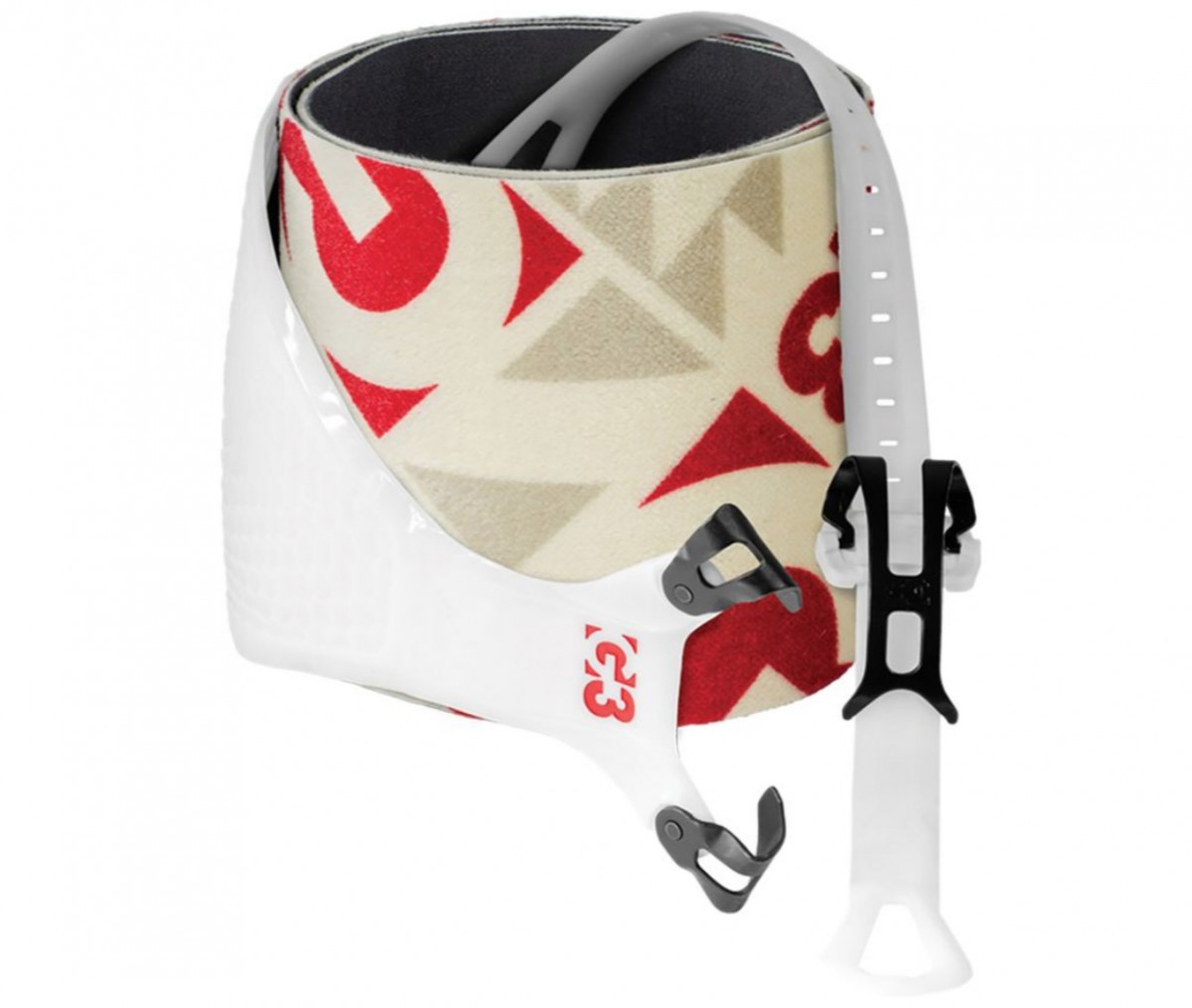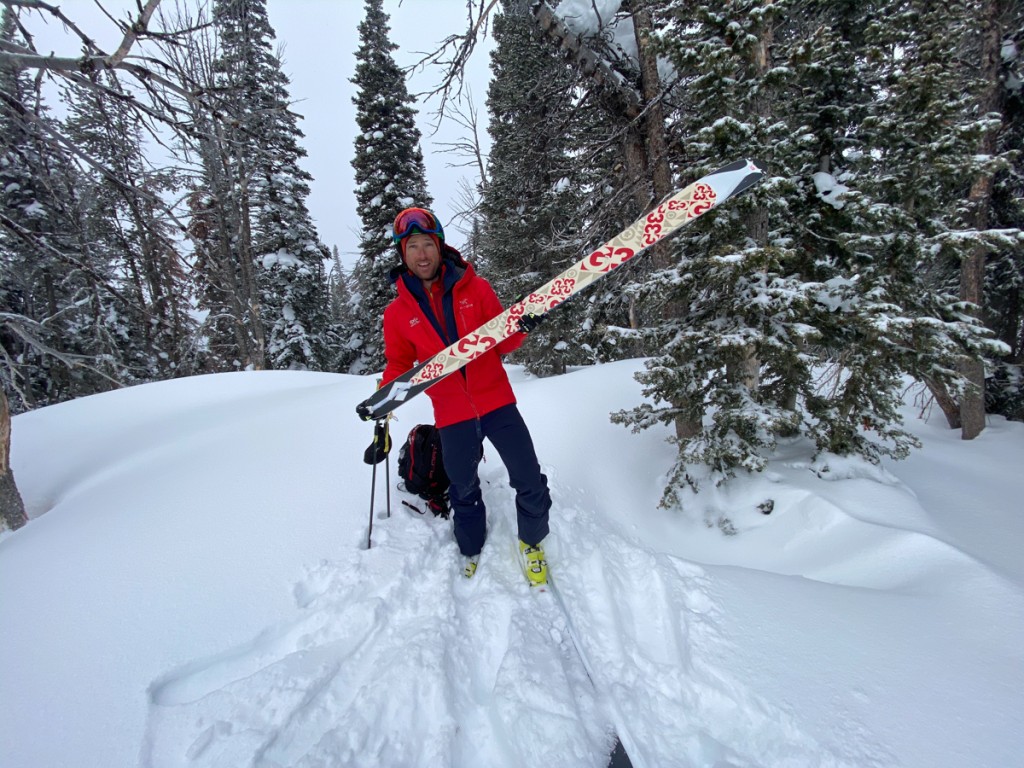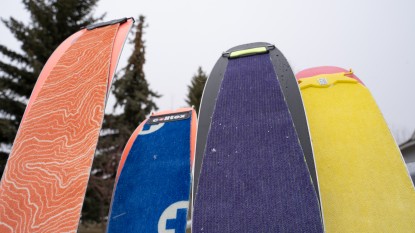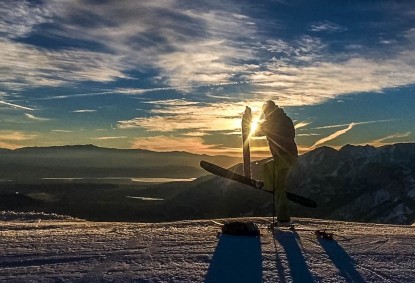G3 Alpinist+ Speed Review
Our Verdict
Our Analysis and Test Results
The G3 Alpinist+ Speed is a good product for many people. G3 equips their skins with the market's best tip attachment and tail clip and a trimming tool that also leads the pack. The Alpinist line of skins includes a plastic tip section that stiffens that area for better glue hold. A “Minimist” line of skins eliminates this plastic tip. The “Speed” qualifier is what G3 uses to denote their 100% mohair skins. This material is G3's best gliding (and, therefore, worst gripping) skin material. We largely found this to be true (but not by much; one of our testers thought G3's blended skins actually glided better than the Speed).
The comparison breaks down a little bit when compared to skins from other brands. G3's best gliding formulation here is more similar to the “slower”, blended skins from other companies. G3 has always been known for grippy, but less gliding, skins. This product fits that stereotype. For last season they changed their glue formulation. On another tester pair of skins, it didn't hold up very well. We haven't used the Alpinist Speed enough yet to see if they remedied that between seasons.
Performance Comparison
Glide
The “Speed” branding is used to suggest that these skins glide better. They do indeed glide better than any other G3 skins we have used, by just a little bit. As compared to options from other brands, the G3 Speed isn't the best glider. The good news is that they glide well enough for the vast majority of backcountry skiing. They strike exactly the grip to glide balance we look for in all-around skins. The catch is that they accomplish this with 100% mohair, compromising durability and icing resistance, while others achieve similar glide with nylon fibers interspersed for more balanced performance.
Grip
The G3 Speed formulation grips as well as an intermediate to expert ski tourer should need. We've said it elsewhere, we've said it for years, and we'll keep saying it. Skins don't need to grip as much as many think they do. There is no question that skin track ascent angle is limited more by biomechanics than it is by skin traction. Skimo racers employ fast gliding, barely gripping mohair skins, and relatively gentle skin tracks to gobble up massive amounts of vertical gain. Skins that grip better skin steeper, but that steeper skin track requires more energy, regardless of your grip characteristics than a gentler one. If your legs say “skin less steeply”, why not choose skins that are in line with this?
The G3 Speed isn't the grippiest skin available. With sloppy technique and icy tracks, or any sort of too-steep track, you will slip out. With good technique in any sort of conditions and on a biomechanically efficient skin track, they have all the grip you need.
Glue Integrity
We are digging the G3 glue, so far, on the Alpinist+ Speed skins. It holds in cold and wet conditions, with normal precautions. It lets go just easy enough to make careful, strenuous,s and attentive “skis on”, up-to-down transitions even on fatter skis. We are tempering our enthusiasm, though, pending further testing. We've used this pair of Speed skins for a couple of months, but we're still a little hesitant. Just one year prior we had trouble with a pair of tester skins that are purported to feature this exact same glue formulation. We will keep testing the G3 Alpinist+ Speed and update as we do.
Icing/Glopping Resistance
Full mohair skins are known for poorer resistance to icing in melt-freeze kind of conditions. The natural fibers absorb more moisture than nylon does. There is no question that the most ice-resistant skins are those that are made of 100% nylon. Other attributes suffer with all nylon skins. We seem to find optimum overall performance, for a variety of reasons, with blended skins. The G3 Speed skins are full mohair, but as noted above in other scoring criteria, their icing resistance is more similar to that of blended skins. This is a good thing.
Packability and Weight
G3's tip attachment and tail strap and hook are the best in the business. But they are also the bulkiest. The fabric portion is also bulkier than other options. In short, the Speed skins aren't as compact as some options that perform similarly. The good news is that the long tail strap allows you to “downsize” your skins for slightly smaller pack form. At the time of purchase, you choose the width and length, and then trim to shape. If you are “between sizes”, length-wise, we definitely recommend choosing the smaller option. You will leave some of your ski tail's base exposed, but you get very little grip there anyway. The plus side is a smaller package in your pocket or bag.
Compatibility
We hint at it over and over again above. G3 Alpinist skins have long been the most compatible skins we've used. The tip kit grabs positively on even the most rounded and slippery of ski tips. The same can be said for the tail hook. The skin trimmer that G3 includes with all their skins is easy to use and performs this onerous task in essentially one step. Other options require more steps. Other than skins precut and measured by a ski manufacturer for their own skis, the G3 Alpinist family is the easiest to set up to whatever ski you may choose.
Value
These are G3's most expensive skin material option. You get the best performance they have to offer, but we can't call them a great value. We will continue to test for durability, but we have to extrapolate from our other experiences. In every other case, 100% mohair skins wear out significantly faster than full nylon or blends.
Conclusion
We really want to love G3 skins. The tip and tail kits are the best around, and the set up is just so easy. The Alpinist+ Speed is definitely the best performing G3 skin we've tested yet, but we still have some reservations. The good news is that our niggling doubts are readily addressed by longer term use, and longer term use just means more amazing human-powered skiing. We'll report back shortly.










